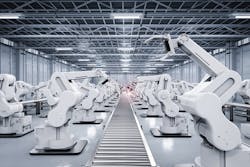The conversation about artificial intelligence is often met with scrutiny and confusion. This is largely because there is no concrete definition of AI. Personal assistants like Siri, Amazon’s Alexa, or Google Home might have some users thinking they are having a conversation or being understood. The following will talk about what type of technology you might want in your home or factory.
Generally, AI comprises advanced algorithms that follow a mathematical function, which is able to handle higher processes similar to humans. Examples include visual perception, speech recognition, decision making, and translations between languages. Your visual inspection system on a production line or your programs like Siri and Alexa are AI devices.
Weak AI
Siri and Alexa could be considered AI, but generally, they are weak AI programs. Even advanced chess programs are considered weak AI. This categorization seems to be rooted in the difference between supervised and unsupervised programming. Voice-activated assistance and chess programs often have a programmed response. They are sensing for things similar to what they know, and classifying them accordingly. This presents a human-like experience, but that is all it is—a simulation. If you ask Alexa to turn on the TV, the programming understands key words like On and TV. The algorithm will respond by turning on the TV, but it is only responding to its programming. In other words, it does not comprehend any of the meaning of what you said.
Classification and recession can be similar to basic calculus; every Y is a function of X:
Y= f(x)
This is not what those cool sci-fi movies are using for their plots.
Strong AI
Featured in many movies, strong AI acts more like a brain. It does not classify, but uses clustering and association to process data. In short, it means there isn’t a set answer to your keywords. The function will mimic the result, but in this case, we aren’t certain of the result. Like talking to a human, you can assume what someone would reply to a question with, but you don’t know. For example, a machine might hear “good morning” and start to associate that with the coffee maker turning on. If the computer has the ability, it theoretically could hear “good morning” and decide to turn on the coffee maker.
Another example is AI in games. In one example, an AI program taught itself to play 49 classic Atari games. When the program was instructed to obtain the highest score it could in the game Breakout, it was able to outperform humans in just 2.5 hours. Researchers let the program continue and to their surprise, the program developed a strategy that was not programmed into the system. Keep in mind that the computer isn’t seeing the bat, ball, or rainbow strips. It “sees” a bunch of numbers. It knows what variables it controls, and how it is able to increase points based on how it controls the variables in relation to the other numbers. BBC News said that in half of the 49 games, the AI was able to beat a professional gamer.
Robotics and automation are becoming more popular in the home and factory. These tools respond a certain way when given an input. You may like the idea of playing a game with your house or holding a conversation with your production line. However, syntax does not suffice for semantics. You want your robots to listen to you (i.e., obey). AI might sound convenient, but advanced algorithms with supervision are, for now, what homes and production lines should have. Despite this, I will eagerly be looking to see what researchers produce in this field in the future even while I listen to the warnings given to us by Stephen Hawking, Elon Musk, and Bill Gates.


